The Consortium
The COURAGEOUS consortium consists of a well-balanced consortium of 7 LEA’s, complemented with 5 Research & Technology Organizations. The project is coordinated by the Belgian Royal Military Academy.
The 6 EU LEA’s have an existing and proven competence in the domain of working with C-UAS tools. Their rich field experience as domain experts will give the consortium the necessary inputs to develop user-centred standardised test tools.
The 5 RTO partners have extensive expertise on the development of C-UAS systems or in the validation of those systems. Their deep knowledge of the internal working of C-UAS systems and how to validate them will allow COURAGEOUS to build as much as possible technology-agnostic testing tools.
INTERPOL leads the dissemination and exploitation efforts within COURAGEOUS, based on their important work towards developing standard operating procedures related to C-UAS, targeted specifically at LEA’s, and also because their vast network vastly enriches the dissemination and outreach potential of COURAGEOUS.
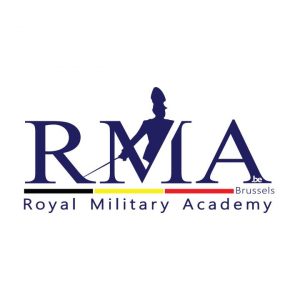 | The Royal Military Academy is a military institution of university education responsible for the academic, military and physical training of future officers, and for the continuing advanced training of officers during their active career in the Defence department. Within RMA, the Robotics & Autonomous Systems Unit is participating to the COURAGEOUS project. The Robotics & Autonomous Systems Unit of the Department of Mechanics of the Belgian Royal Military Academy is a research laboratory specialized in research activities related to unmanned systems (unmanned ground maritime & aerial vehicles), both the development of these systems and also the protection against the malevolent use of these unmanned systems. The lab conducts research in varied domains, ranging from very fundamental aspects to the development of prototype products. Research activities include not only military robotics, but also robotics for crisis management operations and humanitarian demining. RMA not only acts as a pure research institute, but is closely committed to the end users and has a proven track record of operating in the field with the end-users. |
 | The Netherlands Organization for Applied Scientific Research (TNO) was established in 1932 to conduct applied scientific research in the Netherlands. TNO is a non-profit public research body, a knowledge organization for companies, government bodies and public organizations. TNO holds a prominent position in international science and develops new knowledge together with universities and top technology institutes. TNO Defense Safety and Security (DSS) is a department of the Netherlands Organization for Applied Scientific Research. Research and technology development at TNO DSS is focused on operating the main research laboratories for the Dutch Ministry of Defense and Ministry of Justice and Security. TNO Defense research focuses on four areas which represent our main expertise: Information & Sensor Systems, National Security, Operations & Human Factors and Protection, Munitions and Weapons. TNO involvement in defense, safety and security covers a range of activities: military operations, military equipment, command & control and from decision–making, sensors and real-time systems (radars, EO) to data fusion and information analysis (e.g., behavioral and intent analysis) and design & validation of adaptive autonomous systems. |
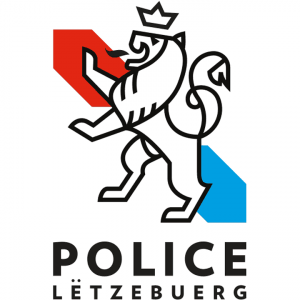 | Availability, accountability, public service. This is the motto of Police Lëtzebuerg, reflected in the slogan on its police cars: ZESUMME FIR IECH – TOGETHER FOR YOU. The Police currently has 59 sites and police departments across four regions. With 13 police departments operating 24/7, it provides a permanent presence covering the entire country. The Police is a national service in charge of internal security. It ensures that individual freedoms and rights are respected and helps to protect them, by taking preventive, proactive, dissuasive and repressive measures. The Police's general law enforcement role includes: - maintaining public order, - ensuring that the law and general and communal Police regulations are implemented and respected, - crime prevention, - protection of people and property. Among those departments, we can highlight the Special Intervention Unit of the Police called “USP” (Unité Spéciale de la Police). This unit is specialised in the operational management of complex police crises, but also assigned to ongoing routine missions (personal protection, surveillance, transport of sensitive items, high-risk arrests, etc.). The operational use of special technical equipment is also the core business of the USP: among this equipment, there are UAV and Counter-UAV means. |
 | The Center for Security Studies (KEMEA) is a think tank on homeland security policies and an established research center since 2005 within the Hellenic Ministry of Citizen Protection aiming to support security policy implementations in Greece at a strategic level. KEMEA is actively involved in: (a) Research and development in the context of implementation of National and European projects under the topics of physical and cyber security and civil protection, in close cooperation with LEAs, working under the auspices of the Ministry of Citizen Protection, civil protection national, regional and local authorities; (b) Training of practitioners in new systems and technologies; (c) Certification of practitioners in private security professions at national level; (d) Organization of table-top and field exercises to test and evaluate preparedness and response of public services, organizations and authorities to emergencies and crises. KEMEA also provides advisory and consulting services to the Ministry of Citizen Protection, as well as other Public and Private authorities, on safety and security issues. KEMEA’s researchers are specialized in various topics such as: Border Management and Surveillance, Crisis Management, Emergency Response, GIS, Hazardous Materials, Information Security, Cyber Security, Information Systems, Telecommunications, Ad Hoc Networks, Civil Protection, Operational Readiness Exercises, Statistics, International Relations, Transportation Security and European Policy, Procurements, Law and Ethics, Dissemination, Communication & Exploitation etc. |
 | The federal level consists of the Federal Police and the local level consists of local police forces, each of which operates in its own district, called a "police zone". Both levels are autonomous but work closely together and are complementary. There is no hierarchical link between them. Local and Federal Police together provide integrated policing. The Integrated Police was established by the law of 7 December 1998 organizing a two-level structured integrated police service. The federal level consists of the Federal Police and the local level consists of local police forces, each of which operates in its own district, called a "police zone". Both levels are autonomous but work closely together and are complementary. There is no hierarchical link between them. Local and Federal Police together provide integrated policing. The Local Police consists of 185 police zones, spread over the entire territory. It is entrusted with day-to-day tasks of both judicial and administrative police within the territory of the police zone. It also carries out seven basic tasks: neighbourhood policing, reception, intervention, police assistance to victims, local investigation, maintenance of public order and road safety. Integrity, impartiality and a sense of responsibility are the pillars of the Federal Police. It carries out judicial and administrative police missions in specialised fields or when phenomena transcend the local level. It also performs operational, administrative and logistic support missions. To this end, the Federal Police is composed of a variety of directorates, units and services. The Federal Police also provides a wide range of support, be it operational or other, to the local police forces. Finally it represents the Belgian police services within the framework of international police cooperation. |
 | The Spanish Ministry of Interior is in charge of proposing and implementing the Government of Spain policy on citizen security and promote conditions for the exercise of fundamental rights, in particular, freedom and security of people, in the terms established in the Spanish Constitution. Within the structure of the Ministry is located the Secretariat of State for Security, which is responsible for the General Subdirectorate of Information and Communications Systems for Security (SGSICS). The mission of SGSICS is provide to the State Security Forces, as well as the Ministry of the Interior itself, with a set of technological tools that enable them to achieve their objectives, developing activities in areas such as: Communications Systems, Security Projects (including drones) and Research, Development and Innovation. SGSICS also manages the SIGLO-CD system. This system aims to facilitate the remote detection, identification, follow-up and monitoring of most commercial drones and those that follow the most used protocols, among those that fly over Madrid urban area and, in case, the neutralization of unmanned aircrafts that fly over facilities of State institutions, such as the Royal House, Presidency of the Government, Congress and Senate. The participation of the Spanish Ministry of Interior in COURAGEOUS, will be carried out through the SGSICS, in coordination and together with the Spanish National Police and Guardia Civil, reference institutions for the protection of citizens, that will contribute with know-how and excellence in operational requirements. |
 | Almost 5,000 people work for the Police and Border Guard Board every day to ensure that Estonia is a safe place to live, work and visit. The functions, rights and responsibilities of Police and Border Guard Board are imposed by the Police and Border Guard Act and the institution’s statute. Seen in the broadest view, our organization’s main functions are related to preserving law and order, investigating and preventing crimes and misdemeanours, guarding the border, rescue at sea, determining the grounds and status for people staying in Estonia, and issuing identity documents. Behind these main category headings arte hundreds of different positions, such as beat police officer, investigator, interpreter, rescue swimmer, armoury manager, pilot and web constable. Every day and night – an average of 400 times during a 24-hour period – patrols come to the aid of people. Each year, we investigate 26,000 crimes and conduct proceedings on 130,000 other offences. We issue half a million identity documents in each year. At any given moment, we are guarding 338 kilometres of eastern border, which is also the external border of the European Union. |
 | The Hellenic Police assumed its present structure in 1984 when the Gendarmerie and the Urban Police Forces were merged (Law 1481/1-10-1984, Government Gazette 152 A). Hellenic Police is a Law Enforcement Agency according to the Law nr. 2800/2000 and its mission is to: - Ensure peace and order as well as citizens` unhindered social development, a mission that includes general policing duties and traffic safety; - Prevent and interdict crime as well as to protect the State and the democratic form of government within the framework of constitutional order, a mission that also includes the implementation of public and state security policy. - Prevent and deter the illegal immigration in Greece and to control the implementation of the legislation related to the entrance, exit, stay and labor of foreigners in the country, including the policing of foreigners and the protection of borders. Hellenic Police is comprised of both central and regional Services. Hellenic Police`s headquarters is the supreme authority over these Services. Its efforts centre on the fulfilment of the Force`s mission, within the framework of the Ministry of Citizen`s Protection policy. |
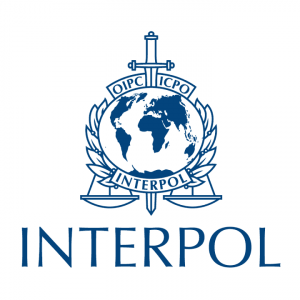 | INTERPOL’s mission is to enable police around the world to work together to prevent and fight international crime. We offer police a high-tech infrastructure of technical and operational support to meet the growing challenges posed by criminals and crimes that increasingly cross borders, both physically and virtually. Only through international cooperation can police hope to make the world a safer place. INTERPOL has three global programmes: Counter-terrorism, Cybercrime, and Organized and emerging crime. Our Innovation Centre is based in Singapore and supports these three crime programmes by helping our member countries understand new technologies and the associated challenges, opportunities and value that they bring. The INTERPOL Innovation Centre has been working in the drone space since 2017. It coordinates global activities and centralizes expertise to ensure a coherent and cohesive dialogue around drones for the benefit of INTERPOL’s entire membership of 195 countries. |
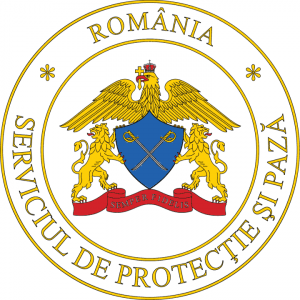 | The Protection and Guard Service (SPP) is a state body with functions in the field of national security, specialized in providing protection for the Romanian dignitaries, the foreign dignitaries during their stay in Romania, and their families, within its legal competence. It also provides guard for the headquarters and residences of the above-mentioned dignitaries in accordance with the decisions of the Supreme Council of National Defence. SPP has a military structure and is part of the national defence system and through its specialized structures, has among other the following functions: organizes and carries out activities in order to prevent and annihilate any action that might be a threat to the life, physical integrity, freedom of action and health of the persons whose protection is in its charge; carries out the guard and defence of these persons’ headquarters and residences; organizes and carries out, overtly or under cover, activities of gathering, checking and using the necessary intelligence, only with a view to completing its missions accordingly to the law ; carries out exchange of intelligence and cooperates with intelligence services as well as with similar departments both within the country and abroad, in order to fulfil the specific missions stipulated by law; organizes and conducts, during the missions of protection and guard, the activity of all the participating forces; intervenes, independently or in cooperation with other institutions designated by the law in order to prevent or counteract the actions that may endanger the life, physical integrity, health or freedom of action of the protected as well as the security of the guarded objectives. |
 | The Military University of Technology (WAT) priorities are: highly qualified teaching staff and building training programs that take into account the rapidly changing needs of the labor market. The Academy, through its activities, stimulates interdisciplinary research teams to engage in a wide spectrum of research projects, including in the field of security engineering, power engineering, satellite technologies. The formation of the Institute of Optoelectronics (IOE) at the Military University of Technology resulted in the fact that research in the field of laser technology was grouped into one institute, which made it the largest Polish research centre in the field of optoelectronics. Based on the basic research topics related to laser radiation sources, radiation detection and its interaction with matter the Institute of Optoelectronics carries out projects within the EU, EDA and NATO. The Institute of Optoelectronics of the Military University of Technology is the heir and continuator of the scientific achievements of the Institute of Quantum Electronics, the Institute of Optoelectronics of the Faculty of Electronics, and a part of the Institute of Plasma Physics and Laser Microfusion. The Military University of Technology provides and brings many years of experience in field testing of detection systems, taking into account their limitations and weaknesses in relation to the developing test methodology. In addition, as a research unit, WAT will allow to systematise and properly measure field tests, which will help to standardise and correctly evaluate the results. The IOE WAT staff, that takes part in COURAGEOUS project, consists of scientific and technical employees, experienced in several research and development projects in the field of C-UAS technology, whose knowledge supports government entities and critical infrastructure in this area. |
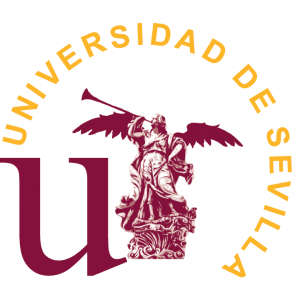 | The University of Seville (USE) created in the early 16th century is one of the most important higher education institutions in Spain, with 70.000 students, 4.300 professors, and 2.750 administrative and service staff. USE is involved in the COURAGEOUS project through the GRVC Robotics Lab (https://grvc.us.es), which has 75 researchers and engineers with strong expertise on robotics and particularly on aerial robotics. GRVC has a long tradition in the EU Framework Programmes leading or participating in 32 projects (Robotics, Galileo, SESAR, Transportation, Clean Skies) in the last two decades: 5 projects of the FP4, 4 of the FP5, 4 of the FP6 ,8 of FP7, 11 of H2020 calls, leading one of them (AERIAL-CORE) and one ERC Advanced Grant. GRVC has received different awards such as the Best drone application award by the European Parliament and the ICT EC Global Innovation Radar Award, both in 2017. Finally, the GRVC Robotics Lab has transferred technology to different companies such as Airbus D&S, Airbus Operations, Boeing Research and Technology Europe, Navantia, Iturri Group, Indra, Elecnor-deimos, Faasa, Iberdrola, Applus, Mc2, Emasesa, TSK, and Diagnostiqa among others. |
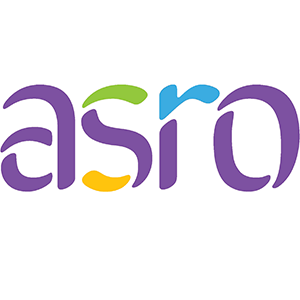 | The National Standardisation Body – ASRO is an association, Romanian legal person of private law, of public interest, non-profit, non-governmental and apolitical that operates based on the provisions Legii nr. 163/2015on national standardization andOrdonanţei Guvernului nr. 26/2000 on associations and foundations. ASRO is the national platform for the development and adoption of European and international standards. At European level, the standardization activity is regulated by Regulamentul 1025_2012 ASRO is a full member of: - CEN (2006) - CENELEC (01.02.2006) - ETSI (2005) la NSO National standardisation bodies. - ISO (1950) - IEC (1920) |
